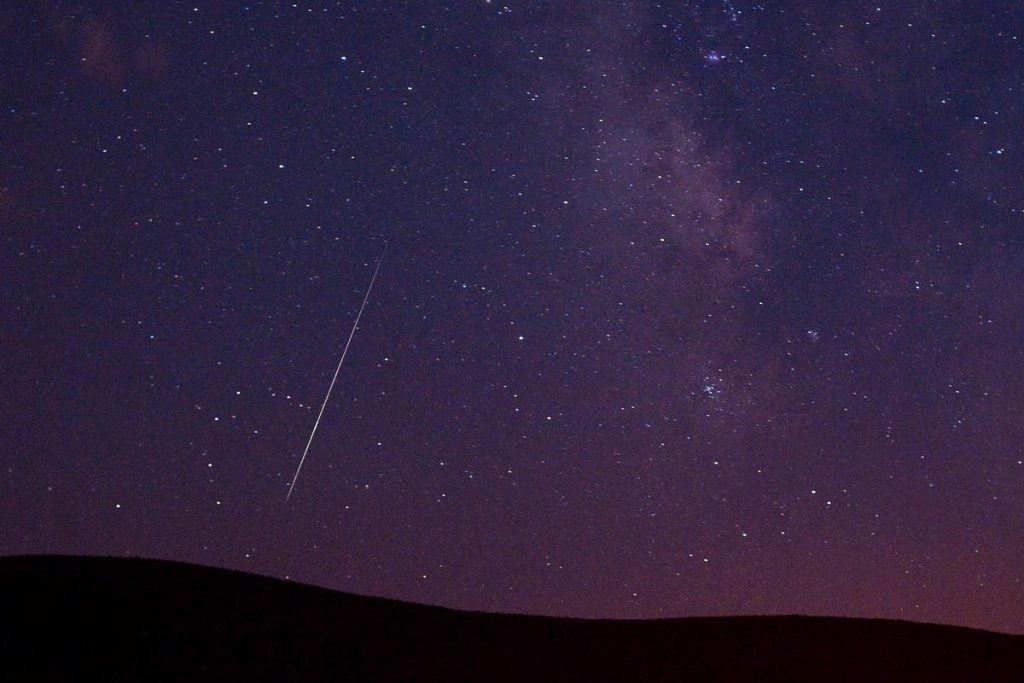This weekend sees the peak of the Perseid meteor shower, the most popular and one of the most prolific of the year in the northern hemisphere.
It’s coming real soon! If you’ve yet to make plans and don’t know what to do, where to look and when to see “shooting stars,” here’s a last-minute guide with everything you need to know about the Perseid meteor shower’s peak in 2023:
When is the Perseid Meteor Shower?
This year it happens overnight on Saturday, August 12 and Sunday, August 13, 2023. The best advice is to look during all hours of darkness, wherever you are, though the hours after midnight will give you a slightly elevated chance of seeing the highest rates of “shooting stars” per hour.
Why This Year’s Perseid Meteor Shower is Being Hyped
Unlike in 2022, there will be no bright moon shining during the peak nights, meaning naturally dark skies and perfect conditions—if there’s clear weather where you are. In fact, a very slim waning crescent moon will rise a couple hours before sunrise, but it won’t be bright enough to make much difference. New Moon this month occurs on August 16.
“Conditions this year couldn’t be more perfect,” says Diana Hannikainen, Sky & Telescope’s Observing Editor. “The waning crescent Moon, which is only 8% illuminated, rises in the wee hours of the morning on August 13 and won’t interfere with viewing.” The main things that could hamper enjoyment of the spectacle are clouds or light pollution, she added.
Best Time to See ‘Shooting Stars’
The actual peak night is August 12-13, 2023, with a sharp peak in activity predicted to occur at 04:00 Universal Time on Sunday, August 13.
- 12:00 a.m. EDT on Sunday, August 13.
- 11 p.m. CDT on Saturday, August 12.
- 10 p.m. MDT on Saturday, August 12.
- 9 p.m. MST/PDT on Saturday, August 12.
More important than those exact peak times is darkness, with the hours between 10 p.m. and 4 a.m. the darkest—wherever you are. Rates of “shooting stars” are also likely to be increased when Perseus climbs high into the darkest sky, which is in the hours after midnight.
If you’re only going to be outside for a couple hours, center on 2 a.m. on Sunday, August 13. However, it’s also wise to look straight after sunset, which is a good time to see “Earthgrazers”—meteors with long trains that appear to skim along the top of the atmosphere.
The couple nights before and after the peak night are also worth keeping free just in case cloud is predicted for the peak night. However, expect 50% fewer meteors.
Where to See ‘Shooting Stars’
Although the bright “shooting stars” will appear to come from the constellation Perseus in the northeastern night sky‚ as seen from the northern hemisphere—the thusly named Perseids—they can appear anywhere in the night sky.
Since the trails left by Perseids are relatively short, it’s best to look about 30-40º away from the radiant point, according to the Society for Popular Astronomy.
Best Places to See the Perseid Meteor Shower
At the very least you should try to keep any bright lights out of your eyes—and that includes your smartphone screen. Ideally you want to escape light pollution and find somewhere without any artificial light, with an International Dark Sky Place, Dark-Sky Preserves (Canada) or Starlight Reserves (Spain) an ideal destination. However, anywhere rural is fine.
A last-minute camping trip is a good idea, though do book ahead if possible—you won’t be the only one going after “shooting stars” this weekend.
Best Ways to See ‘Shooting Stars’
Put that telescope down. Don’t touch those binoculars. This is an event all and only for naked eyes. Find a safe, empty area with a big sky view—such as a field, meadow, golf course or campsite—and lay on a blanket, sit on a lawn chair or gently steam in an outdoor hot tub. And never take your eyes from the skies.
Wishing you clear skies and wide eyes
Read the full article here










